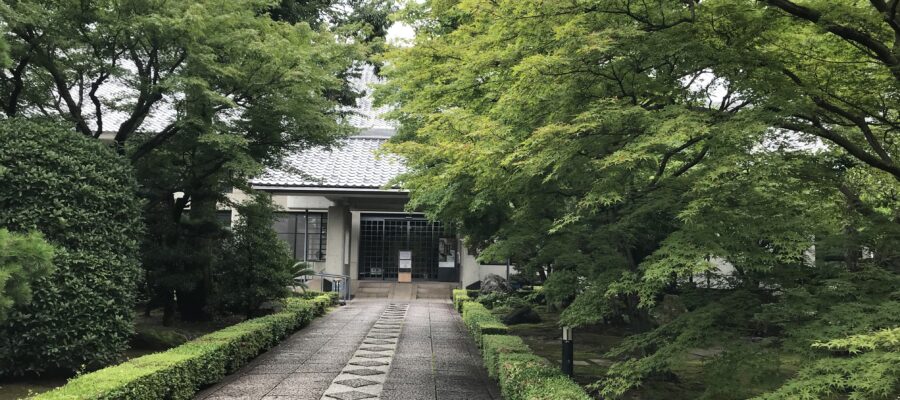相国寺で若冲の絵を見る
同志社大学の隣に位置する相国寺。相国寺の方が、歴史が古いので、同志社大学が隣に来たというべきでしょうか。今回、その相国寺の承天閣美術館にて「若冲と近世絵画」という特別展が開催されていましたので、訪問しました。
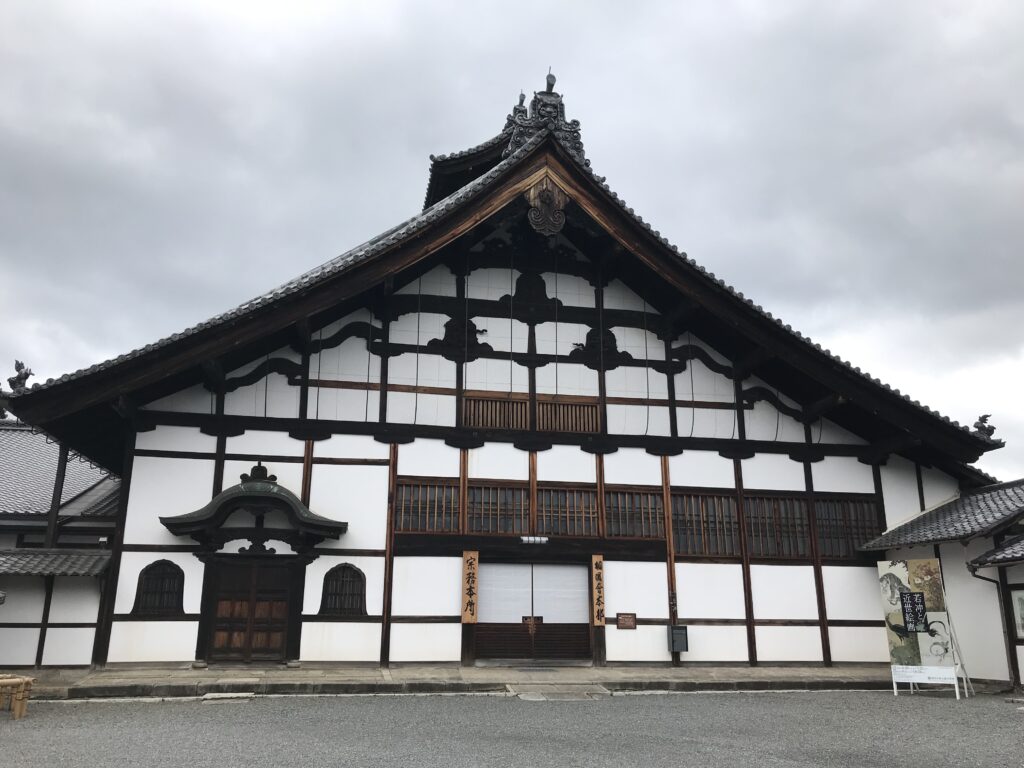
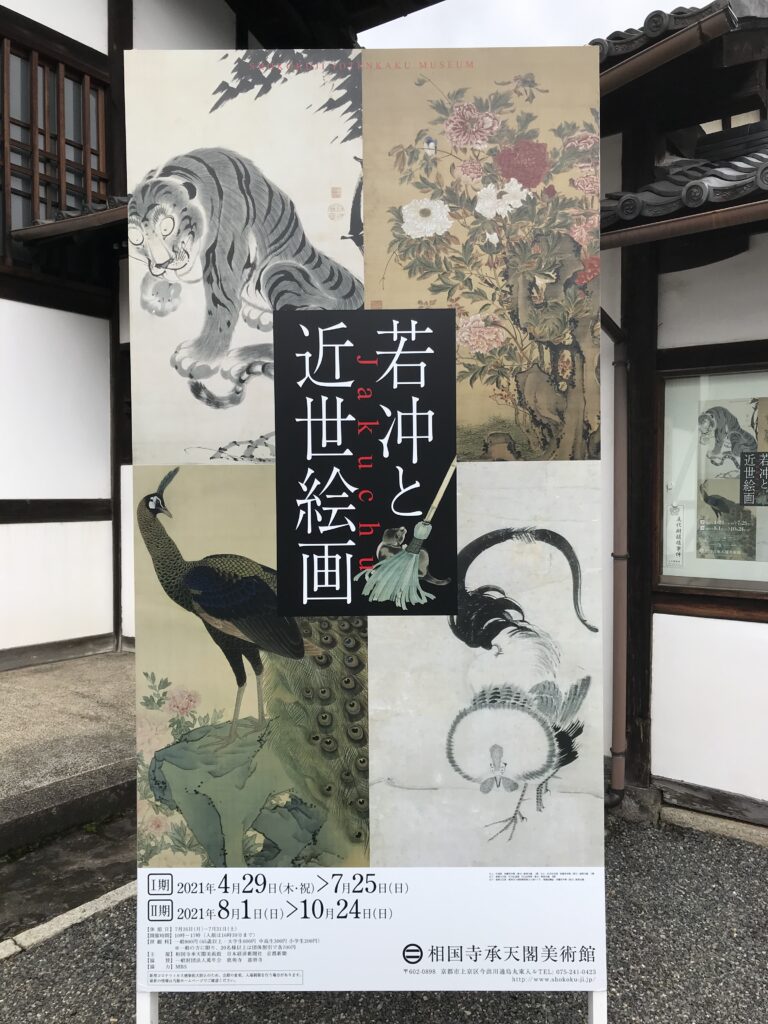
承天閣美術館の前の庭
本当は、相国寺の方丈や庭園も見たかったのですが、訪問した日は公開日ではありませんでした。それでも、承天閣美術館の正面両側には苔むした地面に、ユニークな形の灯篭が建っていて、その庭園も興味深く拝見しました。
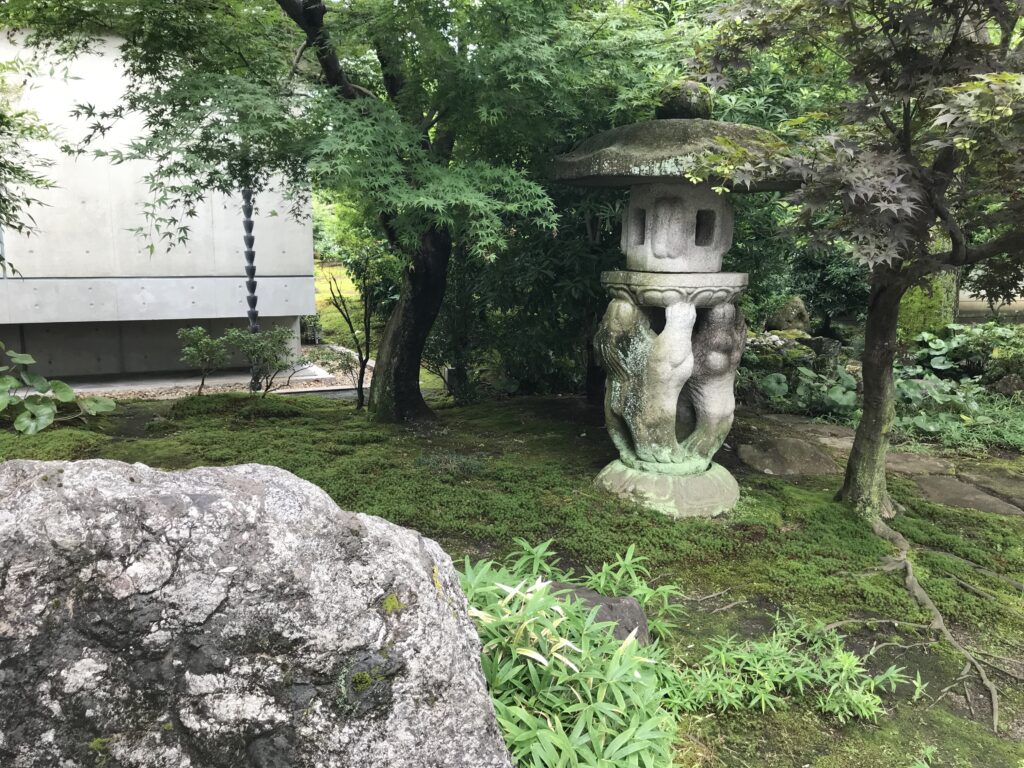
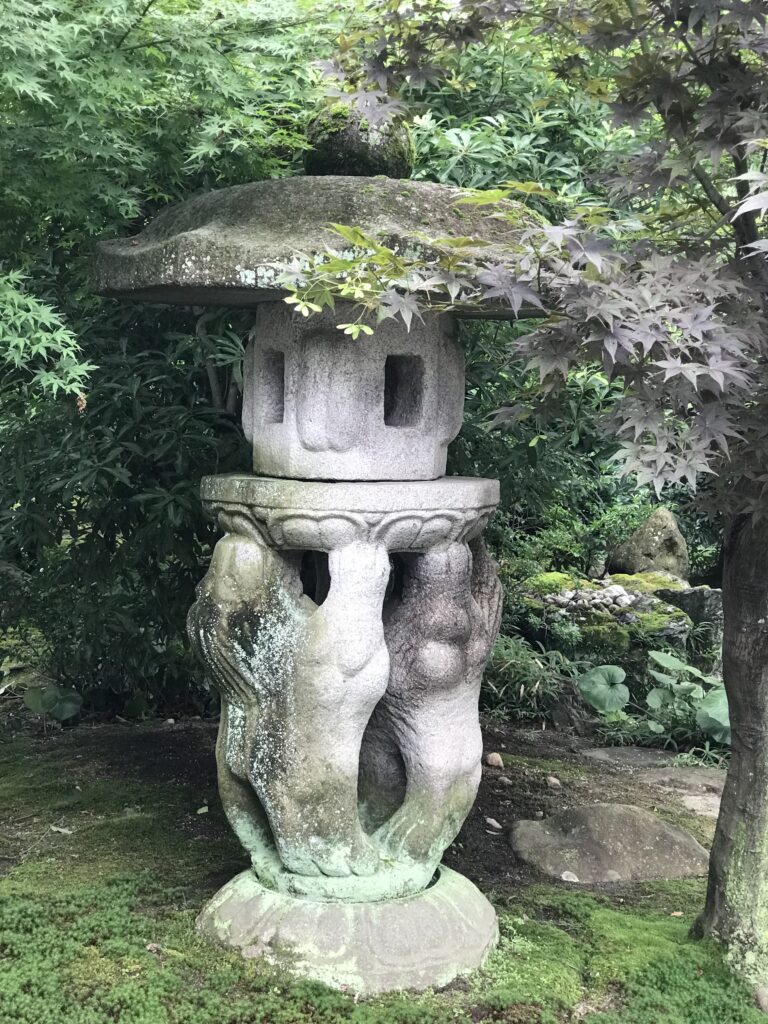
3幅の釈迦三尊像
伊藤若冲と相国寺の僧との交流を描いたNHKドラマを見た際に、若冲が描いた釈迦三尊像(3幅)と動植綵絵(30幅)が、相国寺に贈られ、明治維新後に相国寺が経済的な窮地に陥った際に、この動植綵絵(30幅)を宮内庁に献上して、窮地を脱したと知りました。
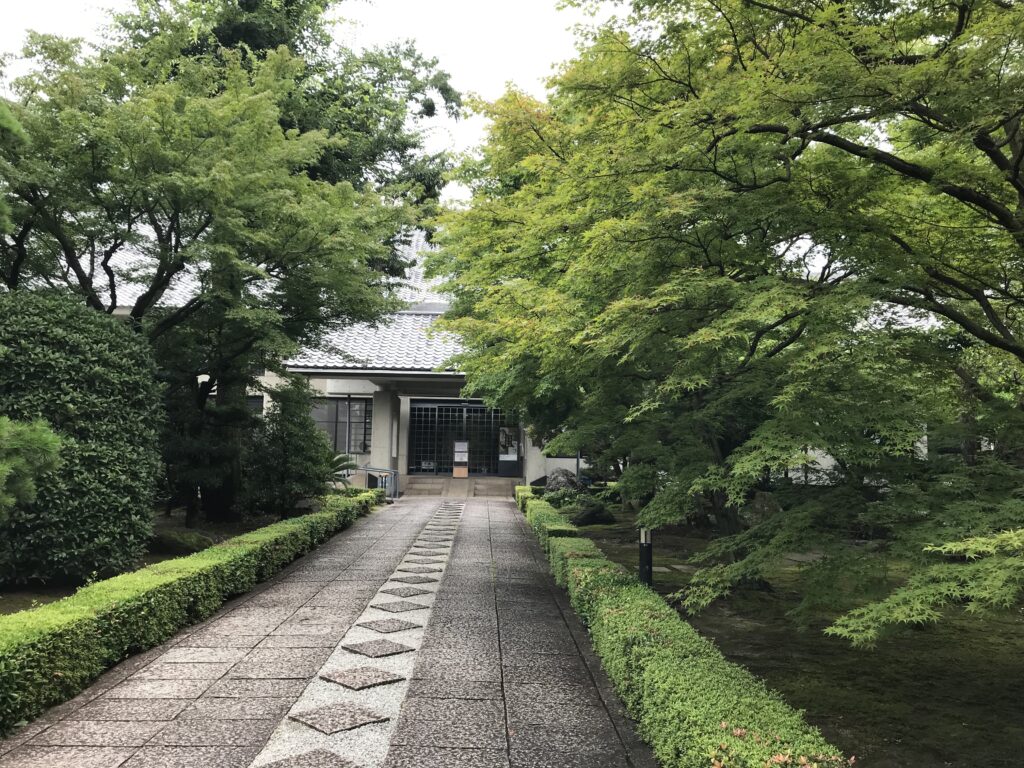
動植綵絵(30幅)は東京に行ってしまいましたが、釈迦三尊像(3幅)は京都に残っており、今回展示されていました。撮影禁止ですが、インターネットの画像検索で出てきますので、そちらをご確認ください。正面に3幅並ぶと、さすがに厳かでありがたく感じます。1幅が大きいので、お釈迦さまが私たちを見下ろしているようになります。正面に据えられた椅子に座って、しばらくその絵を眺めていました。
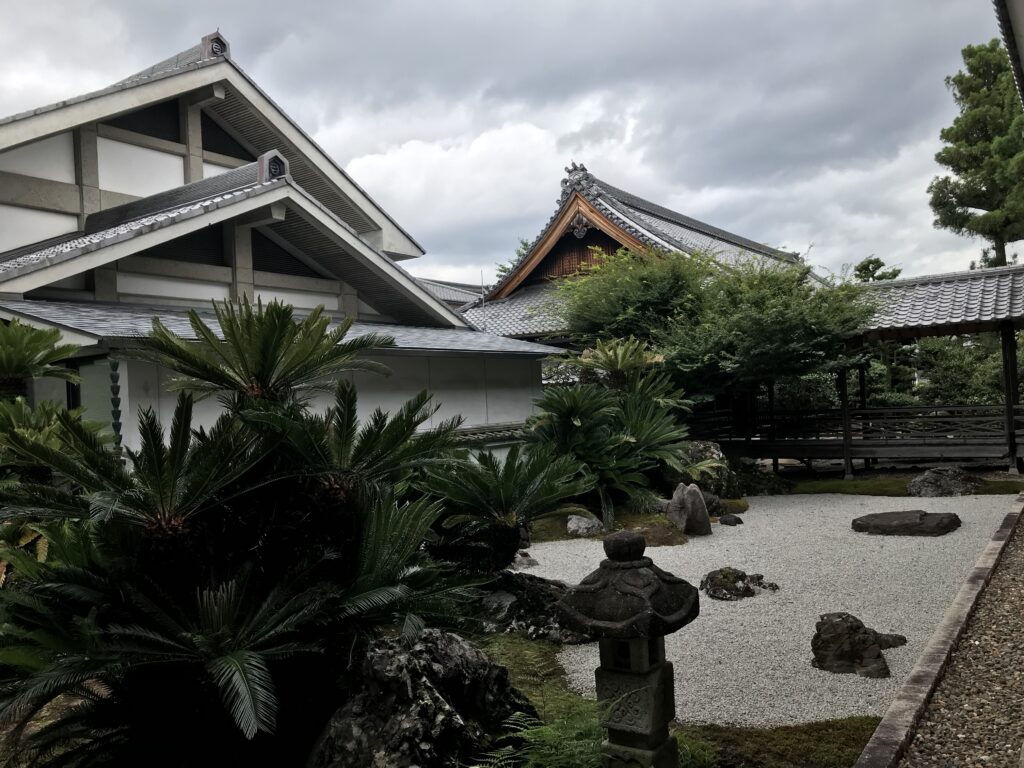
与謝蕪村や丸山応挙の絵もある
この美術館には鹿苑寺(金閣寺)の大書院壁画50面、慈照寺(銀閣寺)にある与謝蕪村の障壁画「山水人物図」も披露されていました。池大雅や丸山応挙などの18世紀に京都画壇を彩った絵師たちの絵を楽しむことができました。(完)
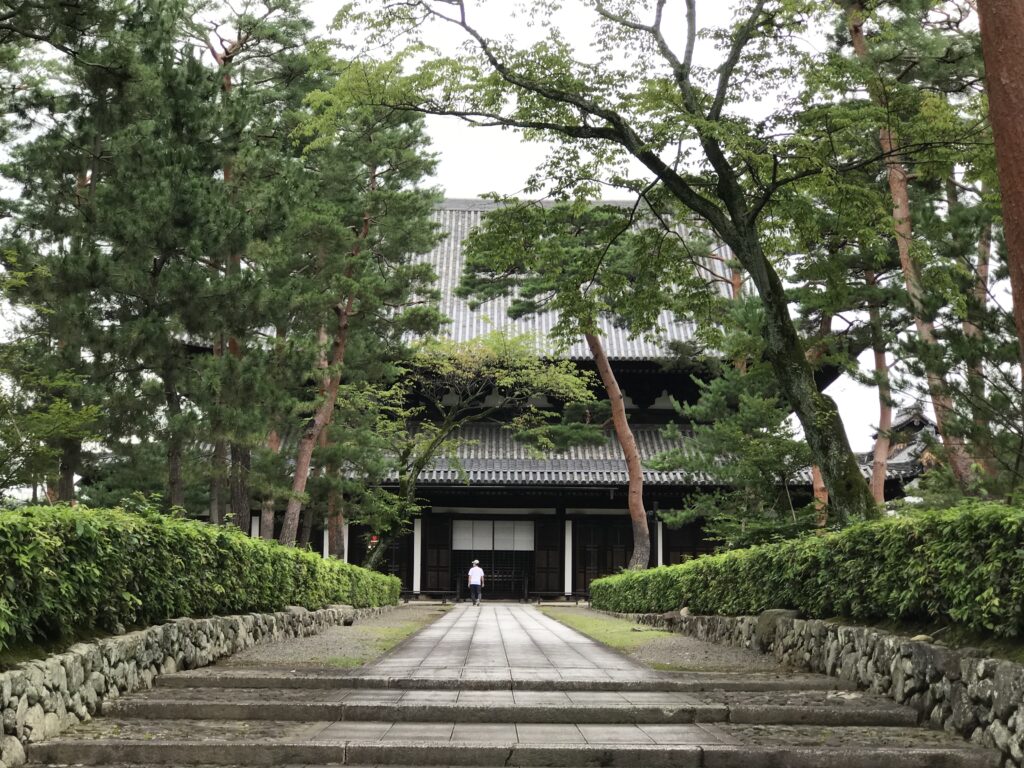
相国寺の御朱印
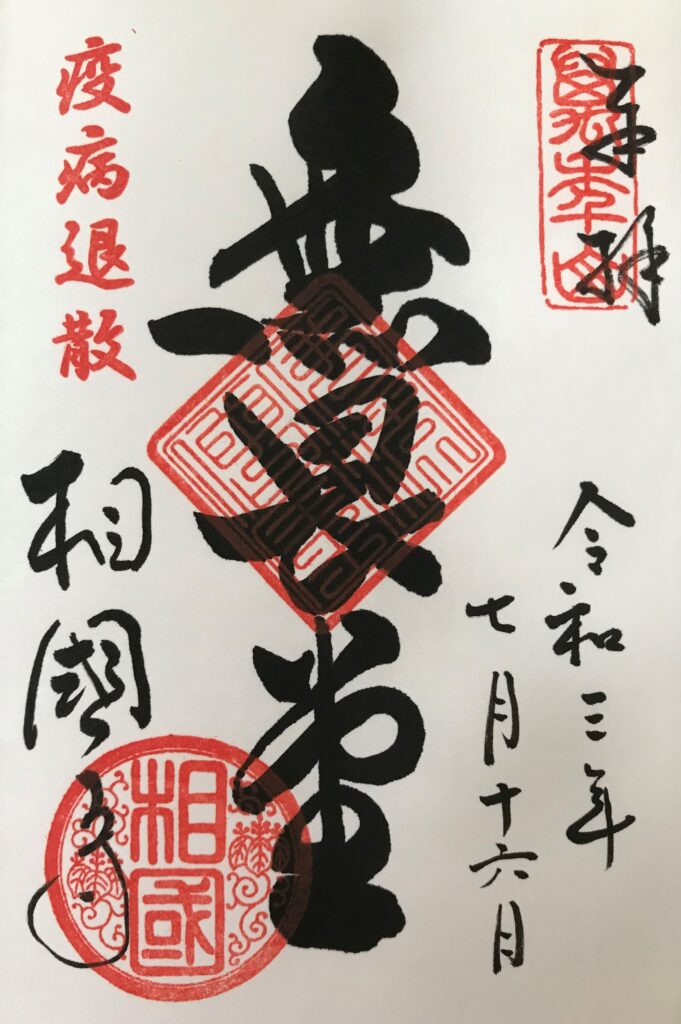
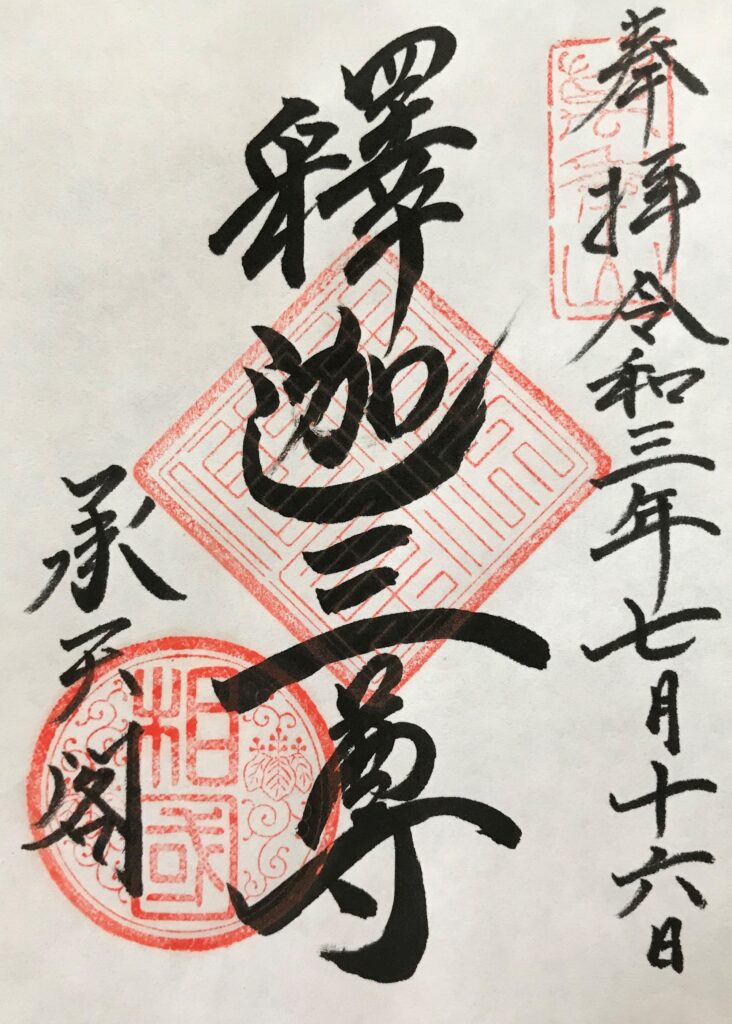
相国寺が紹介されている書籍
神仏霊場会の公式ガイドブックに相国寺が紹介されています。
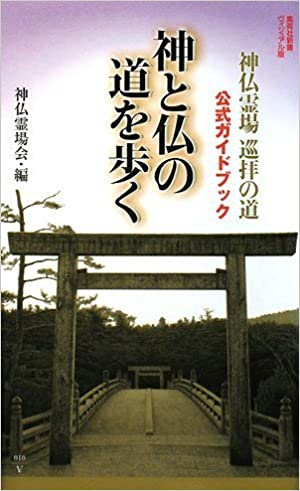
神と仏の道を歩く 神仏霊場巡拝の道公式ガイドブック (集英社新書ヴィジュアル版) [ 神仏霊場会 ]
価格:1,466円
(2021/5/6 09:24時点)
感想(5件)
Shokokuji Temple
Shokokuji Temple is located next to Doshisha University. Shokokuji Temple has a longer history than Doshisha University, so we should say that Doshisha University is now located next to Shokokuji Temple. This time, we visited the Jotenkaku Museum of Art at Shokokuji Temple, which was holding a special exhibition titled “Jakuchu and Modern Paintings”.
We really wanted to see the Hojo and the garden of Shokokuji, but they were not open to the public on the day we visited. Nevertheless, we were interested in the unique lanterns on the moss-covered ground in front of the Jotenkaku Art Museum and the gardens on both sides.
When I saw the NHK drama about the interaction between Jakuchu Ito and the priests of Shokokuji Temple, I learned that Jakuchu’s three statues of Sakyamuni and thirty festooned paintings were presented to Shokokuji Temple, and that after the Meiji Restoration, when Shokokuji Temple was in financial difficulties, the temple presented the 30 festooned paintings to the Imperial Household Agency to save them from the financial difficulties they were in.
The 30 festus pictures went to Tokyo, but the three statues of Sakyamuni remained in Kyoto, where they were exhibited this time. Photography is prohibited, but you can find the images on the Internet. The three statues in front of the exhibition hall are very austere and appreciated, and one of the statues is so large that it looks as if the Buddha is looking down at us. I sat down on a chair in front of the painting and gazed at it for a while.
The museum also exhibited 50 mural paintings from the Grand Shoin at Rokuonji Temple (Kinkakuji Temple) and Yosa Buson’s “Landscape and People” at Jishoji Temple (Ginkakuji Temple). Visitors could enjoy paintings by Ike Taiga, Maruyama Okyo, and other painters who colored the Kyoto art world in the 18th century. (End)

価格:5,000円
(2021/11/27 17:37時点)
感想(34件)
Temple Shokokuji
Le temple Shokokuji est situé à côté de l’université Doshisha. Le temple Shokokuji a une plus longue histoire que l’université Doshisha, on peut donc dire que l’université Doshisha est maintenant située à côté du temple Shokokuji. Cette fois-ci, nous avons visité le musée d’art Jotenkaku du temple Shokokuji, qui présentait une exposition spéciale intitulée “Jakuchu et peintures modernes”.
Nous voulions vraiment voir le Hojo et le jardin de Shokokuji, mais ils n’étaient pas ouverts au public le jour de notre visite. Néanmoins, nous étions intéressés par les lanternes uniques sur le sol recouvert de mousse devant le musée d’art Jotenkaku et les jardins des deux côtés.
Lorsque j’ai vu le feuilleton de la NHK sur l’interaction entre Jakuchu Ito et les prêtres du temple Shokokuji, j’ai appris que les trois statues de Sakyamuni et les trente tableaux festonnés de Jakuchu ont été offerts au temple Shokokuji, et qu’après la restauration Meiji, lorsque le temple Shokokuji a connu des difficultés financières, le temple a offert les trente tableaux festonnés à l’Agence de la maison impériale pour le sauver des difficultés financières dans lesquelles il se trouvait.
Les 30 tableaux festonnés sont partis à Tokyo, mais les trois statues de Sakyamuni sont restées à Kyoto, où elles ont été exposées cette fois-ci. Il est interdit de les photographier, mais vous pouvez trouver les images sur Internet. Les trois statues devant la salle d’exposition sont très austères et appréciées, et l’une des statues est si grande qu’on dirait que le Bouddha nous regarde de haut. Je me suis assis sur une chaise devant le tableau et je l’ai contemplé pendant un moment.
Le musée exposait également 50 peintures murales du Grand Shoin au temple Rokuonji (temple Kinkakuji) et “Paysage et personnes” de Yosa Buson au temple Jishoji (temple Ginkakuji). Les visiteurs ont pu apprécier les peintures de Ike Taiga, Maruyama Okyo et d’autres peintres qui ont coloré le monde de l’art de Kyoto au XVIIIe siècle. (Fin)
